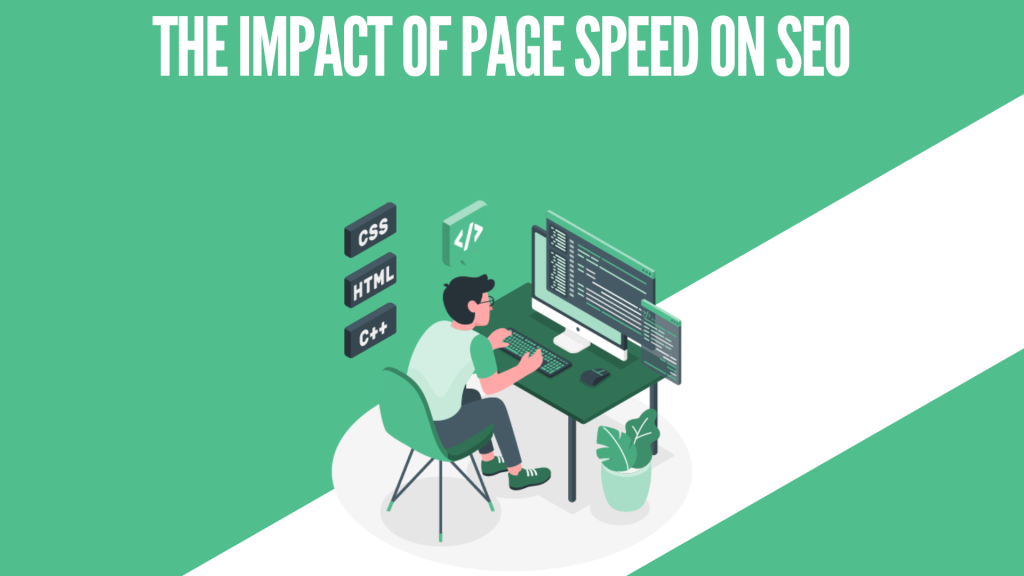
In the fast-paced digital landscape, where user experience is paramount, page speed has become a critical factor for website success. Page speed not only affects user satisfaction but also plays a significant role in search engine optimization (SEO). Search engines like Google consider page speed as a ranking factor, making it essential for businesses to optimize their websites for faster loading times. In this comprehensive guide, we will explore the impact of page speed on SEO and provide actionable tips to improve it.
The Importance of Page Speed for SEO
1. User Experience and Engagement
A fast-loading website enhances user experience, leading to higher engagement and lower bounce rates. Users expect web pages to load quickly, and any delay can result in frustration and abandonment. Studies show that even a one-second delay in page load time can lead to a significant drop in conversions. By optimizing page speed, you can ensure a seamless user experience, keeping visitors engaged and encouraging them to explore more of your content.
2. Search Engine Rankings
Google and other search engines prioritize user experience, and page speed is a key component. In 2010, Google officially announced that page speed is a ranking factor in their algorithm. Faster websites are more likely to rank higher in search engine results pages (SERPs), leading to increased visibility and organic traffic. By improving page speed, you can boost your chances of ranking higher and attracting more visitors to your site.
3. Mobile Optimization
With the rise of mobile internet usage, optimizing page speed for mobile devices is crucial. Google’s mobile-first indexing means that the mobile version of your site is considered the primary version for ranking purposes. Slow-loading pages on mobile devices can negatively impact your SEO efforts. Ensuring your website is mobile-friendly and loads quickly on all devices is essential for maintaining and improving your search engine rankings.
How to Measure Page Speed
Before you can improve your page speed, it’s important to measure it accurately. There are several tools available to help you assess your website’s performance:
1. Google PageSpeed Insights
Google PageSpeed Insights is a free tool that provides insights into your website’s performance on both mobile and desktop devices. It offers suggestions for improving page speed and highlights specific areas that need attention.
2. GTmetrix
GTmetrix is another popular tool for analyzing page speed. It provides detailed reports on various performance metrics, including page load time, total page size, and the number of requests. GTmetrix also offers recommendations for optimizing your site.
3. WebPageTest
WebPageTest allows you to run tests from multiple locations worldwide, providing a comprehensive view of your website’s performance. It offers advanced features, such as filmstrip views and video capture, to help you understand how your page loads over time.
Tips to Improve Page Speed
Improving page speed requires a combination of technical optimizations and best practices. Here are some effective strategies to enhance your website’s loading times:
1. Optimize Images
Images are often the largest elements on a web page, significantly impacting load times. To optimize images:
- Compress images: Use tools like TinyPNG or ImageOptim to reduce file sizes without compromising quality.
- Use the right format: Choose appropriate formats (JPEG for photographs, PNG for graphics with transparency) and consider newer formats like WebP for better compression.
- Lazy loading: Implement lazy loading to defer the loading of off-screen images until they are needed.
2. Minimize HTTP Requests
Each element on a web page (images, scripts, stylesheets) requires an HTTP request. Reducing the number of requests can speed up page load times:
- Combine files: Merge CSS and JavaScript files to reduce the number of requests.
- Inline small CSS and JavaScript: For small CSS and JavaScript snippets, inline them directly into the HTML to avoid additional requests.
3. Enable Browser Caching
Browser caching allows frequently accessed resources to be stored locally on the user’s device, reducing load times for subsequent visits. Set appropriate cache headers for static resources to take advantage of caching.
4. Minify CSS, JavaScript, and HTML
Minification removes unnecessary characters (whitespace, comments) from code files, reducing their size and improving load times. Use tools like UglifyJS for JavaScript and CSSNano for CSS to automate the minification process.
5. Implement Content Delivery Networks (CDNs)
CDNs distribute your content across multiple servers worldwide, reducing the distance between users and your website. This results in faster load times, especially for users located far from your server.
6. Reduce Server Response Time
A slow server can significantly impact page speed. Choose a reliable hosting provider with fast servers and consider upgrading to a dedicated or VPS hosting plan if needed. Optimize your server settings and use caching mechanisms to further improve response times.
7. Enable Gzip Compression
Gzip compression reduces the size of your HTML, CSS, and JavaScript files, allowing them to be transferred more quickly to the user’s browser. Most modern browsers support Gzip compression, and it can be enabled through your server settings or via plugins.
8. Optimize CSS Delivery
Ensure that your CSS files load efficiently by:
- Avoiding CSS blocking: Place critical CSS inline and defer non-essential CSS to prevent blocking the rendering of your page.
- Asynchronous loading: Use the “async” attribute to load non-critical CSS asynchronously, speeding up the initial load.
9. Prioritize Above-the-Fold Content
Above-the-fold content refers to the portion of your web page that is visible without scrolling. Prioritize the loading of this content to improve perceived load times. Lazy load below-the-fold content to ensure the critical content loads quickly.
Conclusion
Page speed is a crucial factor in SEO, directly impacting user experience, search engine rankings, and mobile optimization. By implementing the strategies outlined in this guide, you can improve your website’s page speed, enhance user satisfaction, and boost your search engine performance. Regularly monitor your site’s performance using tools like Google PageSpeed Insights, GTmetrix, and WebPageTest to identify areas for improvement and ensure your website remains fast and competitive in the ever-evolving digital landscape.


